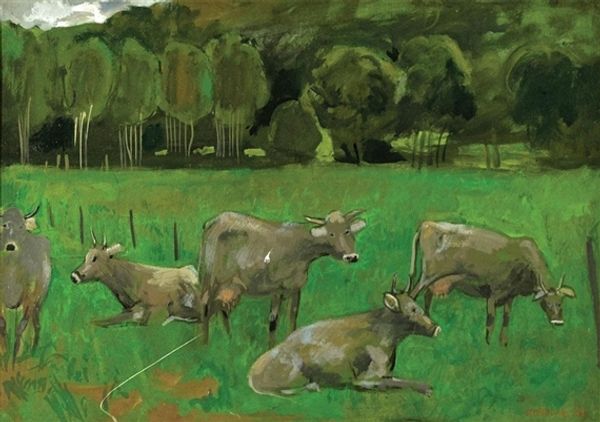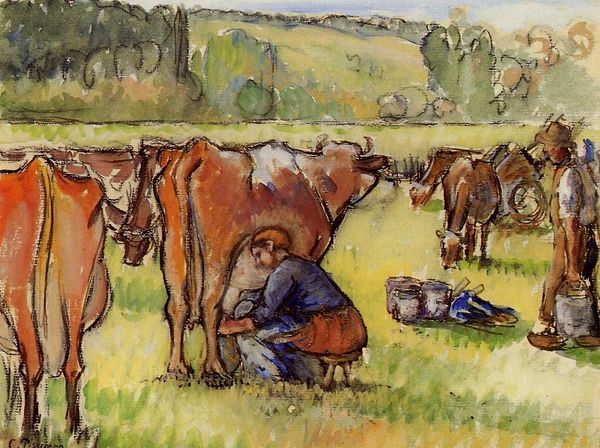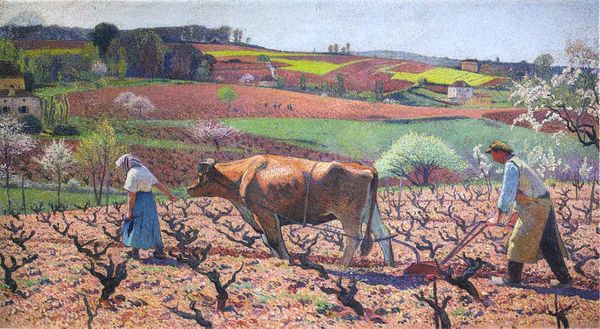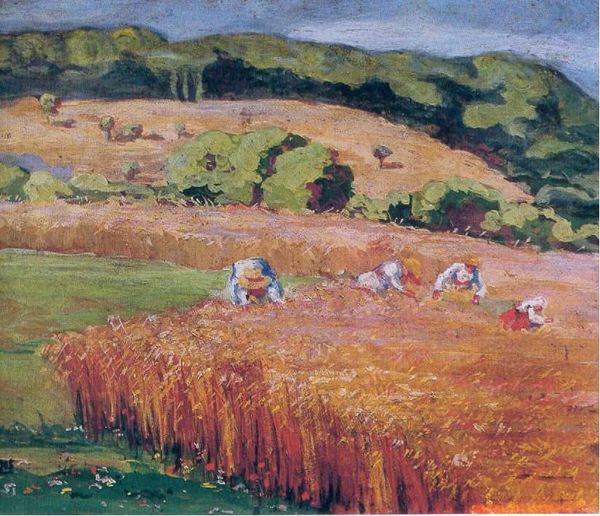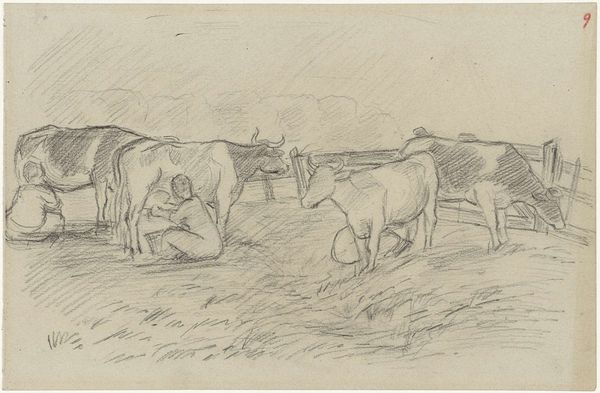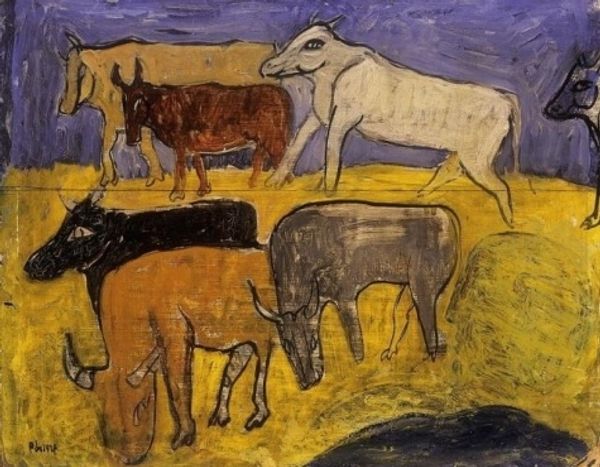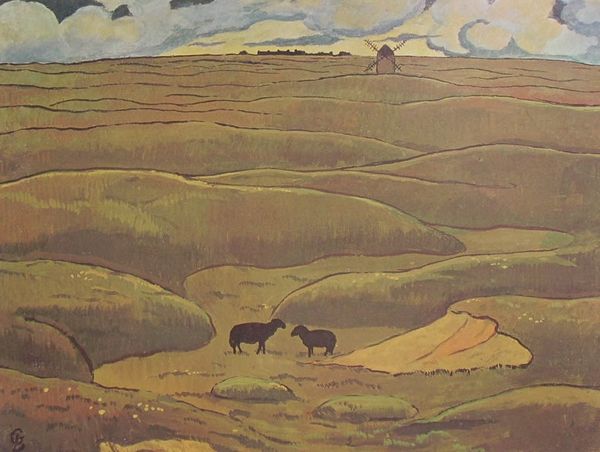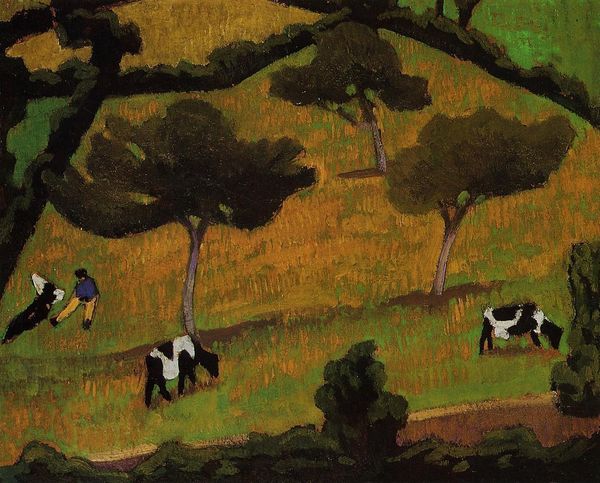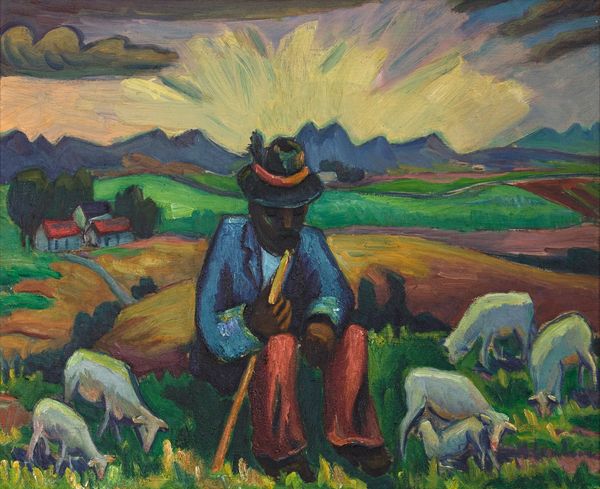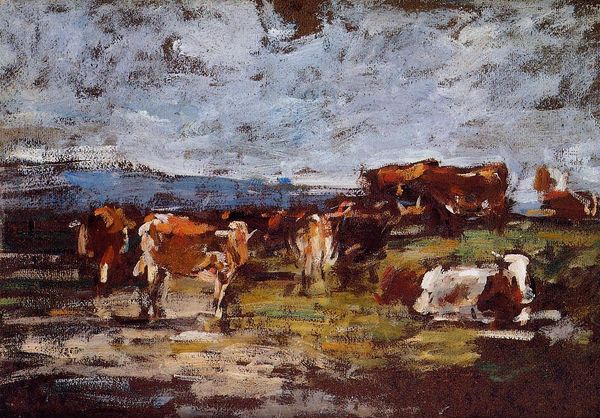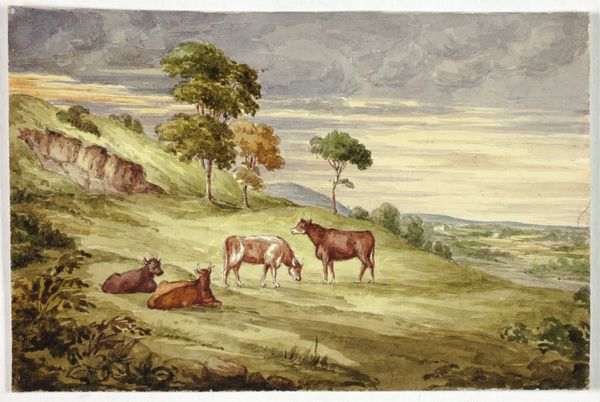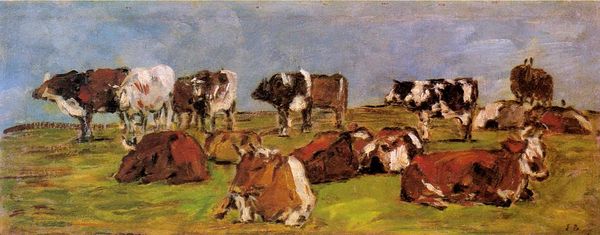
painting, oil-paint
#
painting
#
oil-paint
#
landscape
#
figuration
#
oil painting
#
naive art
#
genre-painting
#
italian-renaissance
Dimensions: 28 x 35 cm
Copyright: Antonio Ligabue,Fair Use
Curator: Ligabue's "Plowing," completed in 1948, captures a scene of rural life rendered with striking directness. The application of oil paint onto the canvas builds texture as we examine the materiality of rural labor. What's your initial impression of this piece? Editor: The immediate sense is one of labor—an unromanticized, almost brutal depiction of man and animal bound by the demands of the land. There's also an incredible tension between the beauty of the landscape and the physical burden of the task depicted. Curator: Absolutely. Considering Ligabue’s background, marked by periods of institutionalization and poverty, it’s tempting to see the labor here less as quaint Italian countryside and more about what this painter might have thought of the rural working class. How do the visible brushstrokes shape our understanding of this piece? Editor: The brushwork emphasizes the sheer physicality of the plowing. The thick daubs of paint applied so directly almost mimic the mud and sweat associated with it. And also, thinking about those periods of institutionalization you mentioned, there might also be questions around Ligabue himself identifying with the toiling animals and perhaps viewing those in charge as those that also oversaw him in his care institutions. What might a "Plowing" by Ligabue be showing here? Curator: The deliberate choice of the materials further pushes the boundaries of what "fine art" can depict and represent. Ligabue isn’t interested in replicating visual reality in a slick or polished way. Rather, we’re invited to participate in the labor of seeing—deciphering form out of this constructed mass of material. Editor: Precisely. And beyond just seeing the image, it prompts questions about power. Who owns the land? Who dictates this endless cycle of work? Whose sweat yields profit? These are questions deeply rooted in the intersection of art and lived reality. And the class issues are highlighted in contrast to a historical Italian art style, here refashioned into almost an "anti-"renaissance form. Curator: Looking at the context of post-war Italy and the shift to mechanized agriculture that inevitably came. He's rendering here what might well have been a disappearing sight. An older traditional means, but, still very very laborious! Editor: It reminds us that even the simplest of scenes, viewed through the lens of art, can unveil layers of meaning that challenge our perceptions of history and who benefits and who does not. I really get the sense of Ligabue being interested here in "folk art," by any means necessary to display this important message about rural farming work. Curator: Indeed, by carefully observing process and production we get access to the hidden histories embedded within these images. Editor: And from those histories, broader implications for societal transformation.
Comments
No comments
Be the first to comment and join the conversation on the ultimate creative platform.
